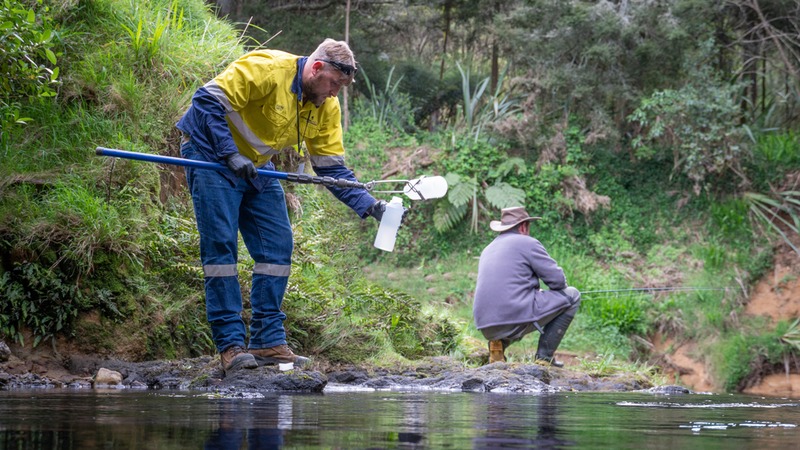Considerations
How have environmental considerations changed over time?
In the modern era, safety and environmental awareness are primary considerations. Legislation continues to reflect this. Environmental considerations are a necessary part of project definition, planning and operation. The table below illustrates the environmental considerations of modern mining compared with the practices in the time of the original Martha Mine up to 1952.
| EARLY MINING | MODERN MINING | |
| LEGISLATION, STANDARDS and GUIDELINES | No legislation to protect the environment and communities. No standards and guidelines for protection of the environment. (e.g., water quality guidelines) | Legislation exists to ensure that environmental considerations are taken into account during project planning and operation. Technical knowledge of the environment is improved, standards and guidelines based on scientific research reflect this. |
| AVOID, REMEDY and MITIGATE ENVIRONMENTAL EFFECTS | Little thought given to avoiding, remedying or mitigating the effects of mining. | A primary focus of legislation, conditions set, project planning, and environmental management. |
| WASTE DISPOSAL | Tailings deposited into the Ohinemuri River. | Tailings deposited within engineered embankments. |
| WATER DISPOSAL | Waste water discharged untreated into the Ohinemuri River. | Stringent limits on water discharge quality and quantity. Emphasis on reducing, reusing and recycling water to minimise waste water volumes. Water Treatment facilities located on site. |
| COMMUNITY | Consultation with the community not carried out prior to, or during, mining. | Community consultation is a major part of modern mining. As part of the permitting process for new projects, individuals can lodge submissions under the RMA. Community liaison and response to complaints and concerns is an important part of the operation. A Company Liaison Officer is dedicated to this task. Mine tours, education centre and open days allow the public to view the operation first hand. |
| REGULATORY AUTHORITIES | No conditions set, so no regulatory agencies. | Regulatory agencies, Waikato Regional Council and Hauraki District Council carry out independent monitoring and ensure conditions are adhered to. |
| INDEPENDENT EXPERTS | No independent environmental experts. | Independent peer review panel oversees various aspects (including construction of embankment structures and open pit /underground mine design) and reports to regulatory authorities. |
| SUSTAINABILITY and FUTURE GENERATIONS | No evidence of any thought given to sustainability. | Emphasis on leaving landforms that are safe, stable and self sustaining. |
| REHABILITATION and CLOSURE | No requirement to rehabilitate sites once mining was completed. Buildings, shafts and mullock heaps were merely abandoned. Areas often revegetated naturally over time. Long term ownership and land management not considered. | Rehabilitation and long term ownership and management of the land are important issues. Before a mine can start, the closure plans must be in place and approved. Financial arrangements (bonds) must also be in place to ensure that rehabilitation plans are carried out no matter what, even if the company carrying out mining is discontinued. “Before you start, think of the finish.” |
| ENVIRONMENTAL MANAGEMENT | Not carried out. | Environmental management is an integral part of the operations. Specialist environmental staff are employed, and the emphasis is on making all staff aware of their environmental obligations through inductions and ongoing training. |
| ENVIRONMENTAL MONITORING | Not carried out. | Environmental monitoring commenced well before modern mining to collect baseline information on the environment. An extensive monitoring system now exists. Opportunities to make improvements are identified by the monitoring. |
